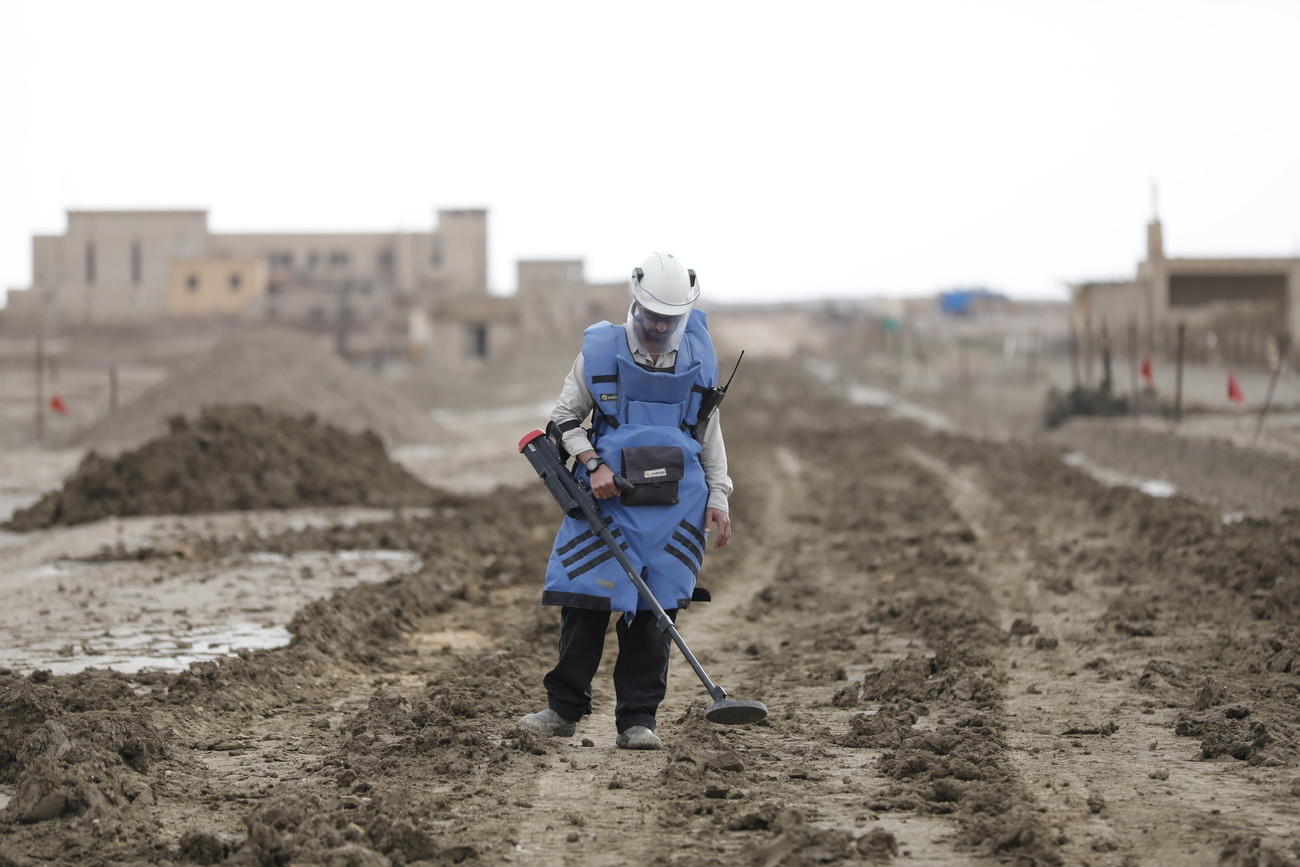Recent rise in landmine casualty rates is a ‘disturbing trend’

Nearly 6,900 people were killed or injured by landmines last year, with improvised mines responsible for over half of all victims - a record - it was reported on Thursday.
In 2018, 6,897 people were victims of mines and explosive remnants of war (ERW), according to the Landmine Monitor 2019External link, which was published in Geneva on Thursday. This is nearly double the number recorded in 2013 (3,457).
Armed conflict and violence in Afghanistan, Mali, Myanmar, Nigeria, Syria and Ukraine were responsible for many of the mine victims.
For the third consecutive year, improvised mines were responsible for large numbers of casualties (3,789). The majority of recorded landmine/ERW casualties during the 2018–2019 reporting period were civilians (71%). Children accounted for 54% of all civilian casualties.
The report’s authors said an upswing in casualty rates since 2015 marked “a disturbing trend”.
The Mine Ban Treaty entered into force 20 years ago. Today there are 164 states party to the convention, with a de-facto moratorium on the production and use of landmines among most countries in the world. Only one state not party to the treaty – Myanmar – and a small number of non-state armed groups used landmines in 2018, according to Landmine Monitor 2019, which is published by the Geneva-based group International Campaign to Ban Landmines.
Refocus mine action
Hector Guerra, director of the International Campaign to Ban Landmines and Cluster Munition Coalition, said the Mine Ban Treaty had “shown incredible impact” to stigmatize the use of mines among states and reduce casualties.
“However the rising casualty trend related to non-state armed group use of improvised mines means we must refocus mine action efforts including mine risk education,” he said.
Last year, nearly 150 km2 of land were cleared of mines, the report noted. However, 59 states or territories remain affected. Some $700 million (CHF693 million) was invested in mine clearance last year around the world – down by nearly $100 million from 2017.
States are meeting next week in Oslo, Norway, for a 20-year review conference. Since global tracking began in 1999, the Landmine Monitor has recorded more than 130,000 mine/ERW casualties, including 90,000 survivors. Nearly 56 million mines have been destroyed, including nearly 1.5 million last year. More than 40 countries have also ceased production.
The year 2025 is the aspirational target set by states at the 2014 Maputo Review Conference for a mine-free world. To date, more than 30 countries have already completely cleared all mined areas on their territory since 1999.

In compliance with the JTI standards
More: SWI swissinfo.ch certified by the Journalism Trust Initiative
You can find an overview of ongoing debates with our journalists here. Please join us!
If you want to start a conversation about a topic raised in this article or want to report factual errors, email us at english@swissinfo.ch.